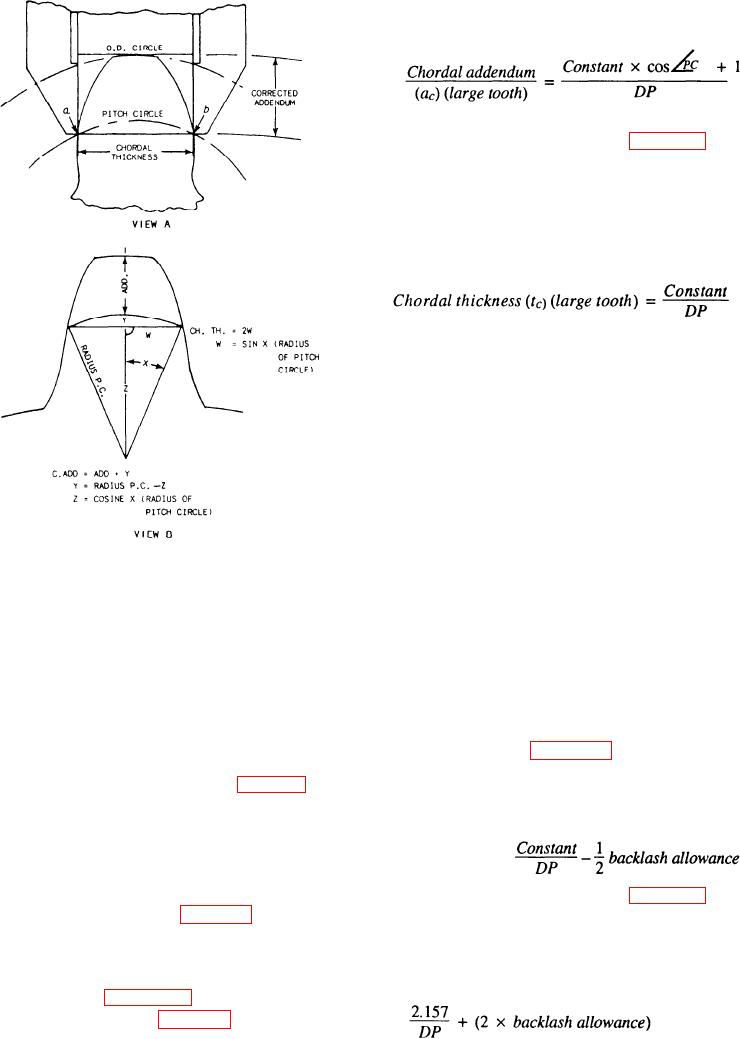
bevel gear calculations. Simply substitute the constant
into the following formula:
NOTE: Obtain the constant from table 14-3, part
B.
The procedure used to solve the chordal thickness
of the large tooth of a bevel gear is the same as that for
a spur gear.
To determine the chordal addendum (corrected
addendum) ac small and the chordal thickness of the
small tooth, multiply the value of the large tooth by the
proportional tooth factor (PTF).
Backlash Allowance of a Bevel Gear
You learned earlier that backlash is the amount by
which the width of a gear tooth space, when two gears
are meshed together, exceeds the thickness of the
Figure 14-17.--Formulas for calculating chordal thickness.
engaging tooth on the pitch circles. You must take these
measurements with a device used for that purpose.
Theoretically, when gear teeth are meshed, they
Chordal Addendum and Chordal Thickness
should run with little backlash. However, manu-
facturing tolerances make this impossible. There must
Before you can measure a manufactured gear tooth
be space between the gear teeth for lubrication and for
accurately, you must know the chordal addendum and
expansion due to temperature changes at high speeds.
the chordal thickness. These dimensions are used to
Just as with helical gears, bevel gears must have
measure the size of the gear tooth.
enough freedom between teeth so they will not bind
Chordal addendum (corrected addendum) a c. This
when the gears turn. Table 14-3, part B shows the
is the distance from the top of a gear tooth to the chord
recommended backlash allowance corresponding to the
across the gear tooth at the pitch circle (fig. 14-17, view
gear's diametral pitch (DP).
A). It is the point at which the chordal thickness is
To determine the chordal thickness with backlash
at the large end of the tooth, use the following formula:
measured.
Chordal thickness of a gear tooth (tc). This is the
Chordal thickness =
distance in a straight line (chord) from one side of the
tooth to the other side at the points where the pitch circle
NOTE: Obtain the constant from table 14-3, part
passes through the gear tooth (fig. 14-17, view A).
B.
Use the following methods to calculate the chordal
To determine the corrected working depth (WD)
addendum and the chordal thickness:
with backlash at the large end of the tooth, use the
You can calculate the dimensions by using the
following formula:
formulas shown in figure 14-17, view B. However, you
can also use tables such as table 14-3, part B, to make
14-19

